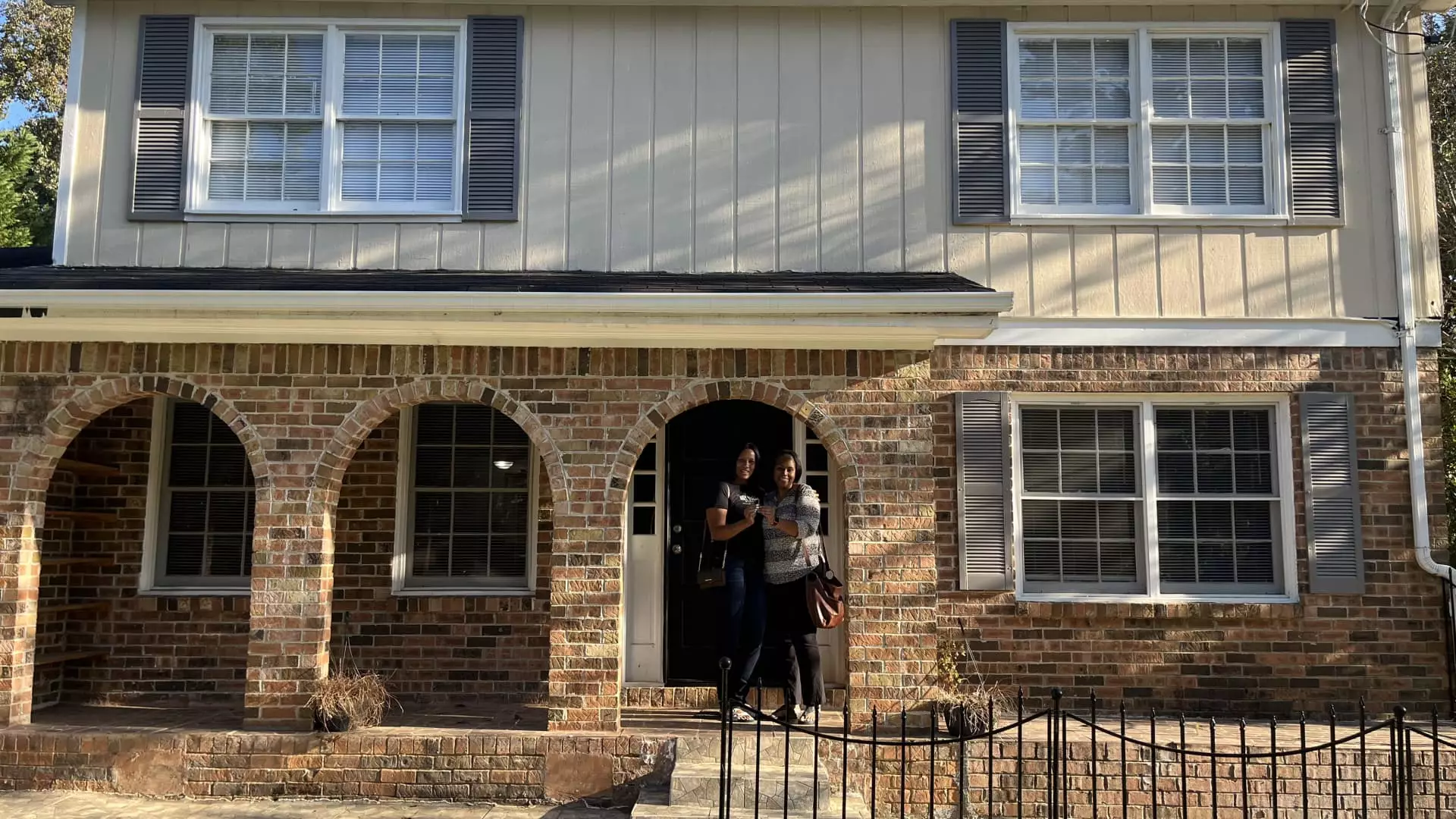In recent years, the quest for affordable housing in metropolitan areas like Atlanta has become increasingly daunting for prospective renters and homebuyers alike. As individuals like When Will Hunnicutt grapple with skyrocketing rent prices and stringent application requirements, the emotional strain is palpable. Hunnicutt’s experience reveals a broader trend that is transforming the landscape of residential availability. Many would-be tenants find themselves caught in a relentless cycle of application rejections, a troubling ordeal exacerbated by the stringent income-to-rent requirements that landlords enforce. The staggering reality of a $3,000 monthly rent, combined with the necessity of earning three and a half times this amount in income, often feels insurmountable, especially for young professionals in low to moderate income brackets.
As homeownership moves out of reach due to soaring housing prices, it becomes essential to examine alternative housing solutions. Hunnicutt’s discovery of a two-bedroom apartment for $1,050—owned by a real estate investment trust (REIT) named Roots—provides a glimmer of hope. This organization aims to create pathways for renters to transition into homeowners by not only providing affordable rent but also investing a portion of security deposits back into the community. As such, renters can earn additional income through a rebate scheme that rewards responsible tenancy. For Hunnicutt, this is more than just finding an apartment; it is a step towards achieving his long-term goal of homeownership.
The dream of owning a home has become a distant fantasy for many. Data from the national brokerage firm Redfin indicates that an annual income of $113,520 is required to purchase a typical home in the U.S.—a figure that exceeds the earnings of 35% of households. This stark reality brings attention to one of the primary roadblocks to homeownership: the down payment. Alarmingly, nearly 40% of non-homeowners cite insufficient savings as their foremost obstacle, according to a 2023 survey by CNBC. This financial impasse has prompted a reassessment of potential solutions to assist aspiring homebuyers.
Down payment assistance programs represent a beacon of hope for many. These programs vary widely, often operating through state agencies, non-profit organizations, or even directly through mortgage lenders. While such assistance is frequently geared toward first-time buyers, a subset also caters specifically to first-generation homebuyers—those who lack familial support to help with down payments, thereby increasing the necessity and significance of targeted assistance. As systemic barriers to homeownership persist, understanding the nuances of these programs becomes essential.
The Importance of Education and Program Accessibility
While many down payment assistance programs are available, there is an added layer of complexity involving eligibility and conditions attached to these programs. An educational component is often mandatory, requiring participants to enhance their understanding of the homebuying process. Furthermore, eligibility criteria frequently entail certain income thresholds and homebuyer commitments. Programs like the one offered by Alternatives Federal Credit Union in New York or Chicago Housing Authority’s substantial assistance illustrate the potential for financial relief for those ready to step onto the property ladder.
However, the distribution and accessibility of such aid often leave much to be desired. Historic injustices and discriminatory practices, such as redlining and predatory lending, have left specific communities, particularly among Black Americans, struggling to overcome significant hurdles in the journey to homeownership. Advocacy for targeted programs aimed at first-generation buyers is critical in this regard. By making resources available to those who may not have familial wealth, these initiatives play a pivotal role in fostering equality in the housing market.
One pervasive myth that continues to hinder potential homebuyers is the belief that a 20% down payment is mandatory. Recent studies reveal that typical first-time buyers only contribute about 8%. Additionally, various loan types allow for down payments as low as 3.5%, with some options requiring no down payment at all. While lower down payments may incur private mortgage insurance (PMI), the misconception that substantial savings are essential can dissuade many from pursuing home buying.
Alternately, individuals might consider tapping into retirement savings to cover down payments; however, financial advisors often caution against this practice, urging consumers to prioritize long-term financial stability. The ethos of saving over investing for those preparing to buy a home is a crucial takeaway. Strategic approaches, such as utilizing high-yield savings accounts or government bond investments, are advised for individuals aiming to purchase within a five-year span.
As the landscape of homeownership shifts, tools and programs are emerging to empower future buyers. The frustration and challenges faced by individuals like Hunnicutt underline the urgent need for comprehensive, accessible solutions. Emphasizing financial literacy, accessibility, and targeted assistance could pave the way for a more equitable homeownership landscape in the U.S. Ultimately, by reframing narratives around savings, support systems, and community-driven initiatives, the dream of homeownership may become an attainable reality for many.


Leave a Reply